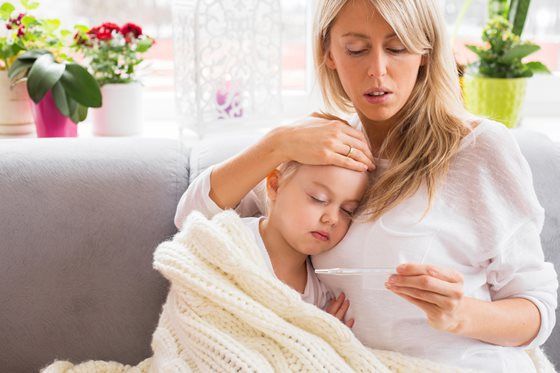Fever Treatment For Children
About Fever Treatment
Fevers are usually a sign that the body is fighting an infection, but they can also be the result of immunizations, heat stroke, or overdressing. In most cases, fevers are not cause for alarm, but there are some situations in which prompt medical attention is needed.
How to Take Your Child’s Temperature
The average body temperature is between 97-99ºF, with some amount of fluctuation throughout the day. Often, parents and caregivers are able to diagnose a fever simply by feeling a child’s forehead, but this is not as reliable as a temperature from a thermometer.
It’s a good idea to invest in a high-quality digital thermometer to have on hand when you think your child might have a fever. The most accurate way to take a temperature is rectally, but for obvious reasons, we only do this with babies. For older children, oral temperatures are best. Underarm temperatures are less accurate, but a reasonable compromise for children too old to do a rectal temperature and too young for an oral thermometer. Ear and forehead thermometers are not as accurate. The more electronics involved, the less accurate the measurement. Keep in mind that each of these methods will yield slightly different results. A fever for a child over 2 months old is:
- An oral temperature above 100.4ºF
- A rectal temperature above 100.4ºF
- An underarm temperature above 99.4ºF
Fevers are often accompanied by chills and sweating; you may notice that your child is breathing faster or has an elevated heart rate.
When to Call the Doctor
Because fevers are often a sign of infection, it’s important to take other symptoms into consideration. If your child is experiencing symptoms in addition to a fever, call our office and we can help you determine whether a visit is needed.
You should also call our office right away if:
- Your child has a fever and is under 3 months of age
- Your child is younger than 2 years old and has a fever that lasts more than one day
- Your child is older than 2 and has a fever that lasts for more than three days
- Your child’s temperature is above 104ºF
- Your child cannot be consoled, is difficult to wake, or is not acting like themselves
How to Treat a Fever at Home
Children are usually fussy and uncomfortable with a fever, so the goal is to help them feel more comfortable. You can do this by:
- Giving your child a fever reducer, like acetaminophen or ibuprofen
- Having them wear lightweight, breathable clothes
- Ensuring that your child is getting enough fluids—water is best, but juice and popsicles work too
If your child is not uncomfortable, there is no reason to give them medication. The American Academy of Pediatrics only recommends using fever reducers when children are not feeling well, not simply for the sake of bringing their temperature down.
Frequently Asked Questions About Fevers
How often should you check your child’s temperature?
Once you’ve established that your child has a fever, you can continue to check their temperature a few times a day.
Does a fever need antibiotics?
No, fevers do not require antibiotics, but some bacterial infections might. If your child’s fever is a symptom of an infection like strep throat, for example, we will prescribe antibiotics.
Should I let my child sleep with a fever?
Yes, sleep is one of the best remedies for any illness. Let your child get the rest they need to support their body’s natural healing process.


